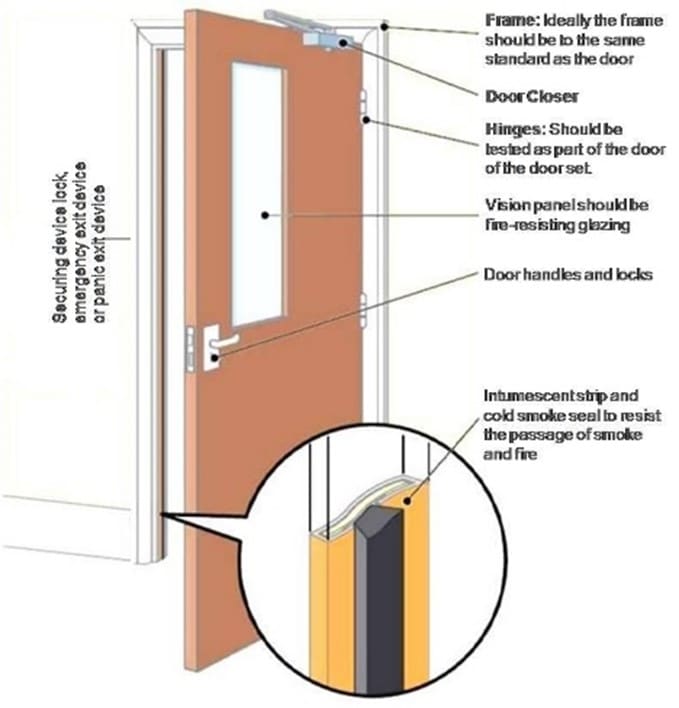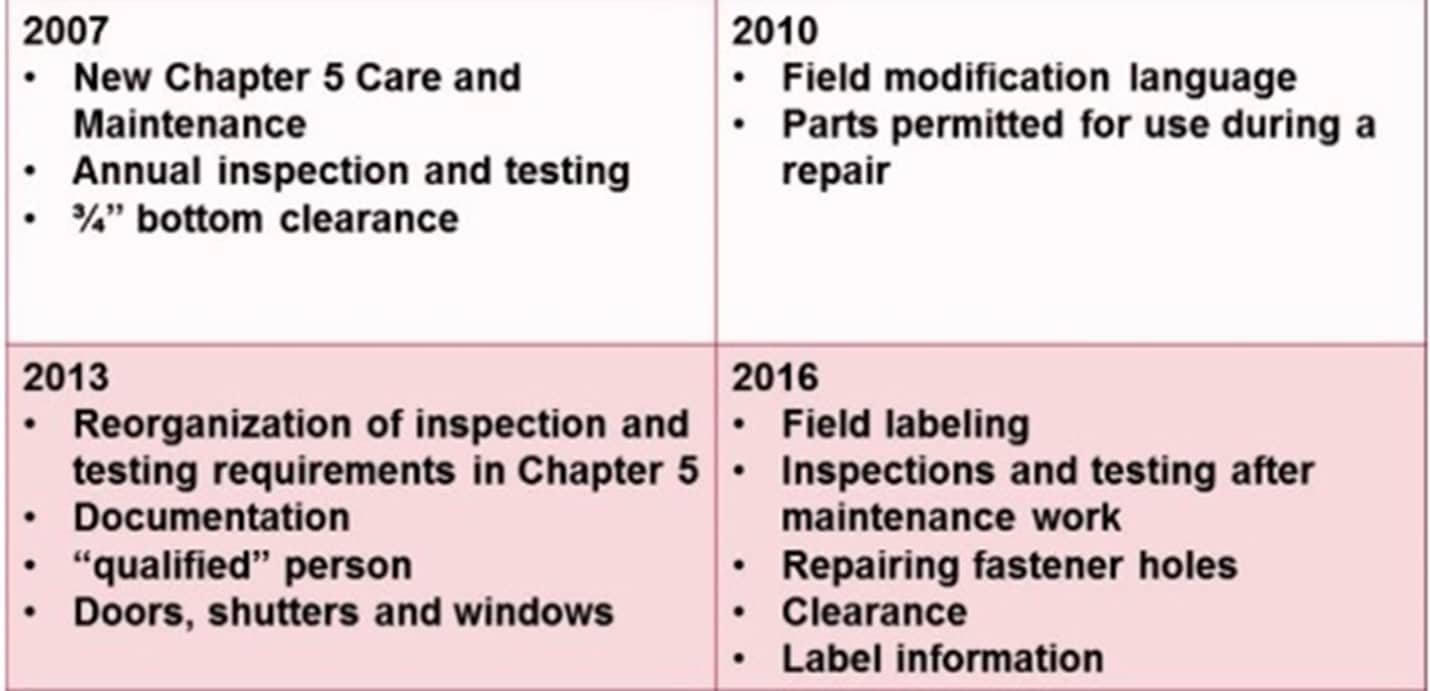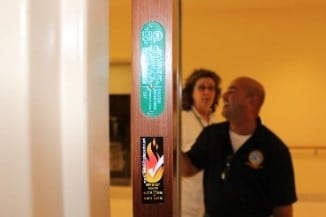Fire Door Inspections

Fire Door Inspections are required annually per the 6th Edition (2017), Florida Fire Prevention Code and Chapter 36 of the 6th Edition (2017), Florida Building Code. The inspection guidelines are incorporated via reference to NFPA 80, Standard for Fire Doors and Other Opening Protectives, 2013 Edition and NFPA 101 – Life Safety Code. NFPA 80 stipulates all fire door assemblies must be inspected annually and a written record retained (Chapter 8). Note: As of 2021, the FBC has not adopted a later version of NFPA 80 contrary to what some inspection companies are claiming.
NFPA 80 (2013 Edition) requires fire doors, fire shutters and fire window assemblies to be inspected and tested upon completion of their installation and also upon completion of any maintenance or alteration work as well as annually.
Annual Fire Door Inspections
Many building owners/facility managers are confused on fire door inspections. Many simply do not order inspections. Enforcement of inspections is typically delegated to the local Fire Marshall/fire department. Fire Marshall inspections are often only conducted during initial occupancy or upon change of occupancy. Budget and staffing restraints generally do not allow annual inspections, so fire door inspections are often overlooked but that does not mean the building owner is not required to complete the inspections. Health care facilities subject to funding from the Centers for Medicare and Medicaid Services (CMS) must conduct and document fire door assembly inspections since 2016.
Adherence to Life Safety Codes is a legal responsibility to building owners and facility managers and, in the event, a malfunctioning fire door resulted in injury or death to an occupant, you may be subject to personal injury claims which may pierce the corporate veil. Trying to save a few dollars by taking advantage of lax oversight could be a significant mistake.
Buildings are not “grandfathered” due to age or location. Any building which is open to public use requires annual inspections of fire rated doors.

NFPA 80 undergoes constant updates but adoption by the Florida Building Code typically lags behind. The latest FBC incorporates the 2013 version of NFPA 80.
A basic fire door assembly inspection will include:
- Verification of door label. Fire doors must be labeled by the manufacturer. If a label is missing or not legible, a field label can be posted provided the door assembly passes inspection.
- No holes or breaks in the door or frame.
- Glazing is intact and secure.
- Door, frame, actuators and hardware are in proper working order.
- Door clearances are within allowable limits.
- Gasketing products such as door sweeps are properly rated for the door assembly, if present.
- Door closer/hinges are functional, and the door is self-closing.
- Door is self-latching in the closed position.
- No field modifications have been performed that void the label or door rating.
- Gasketing and edge seals are functional and proper for the door. Note: Gasketing is required for fire doors in corridors and smoke barriers but is not required for every fire door assembly.
- Signage on the door face is less than 5% of the door area and is not attached with mechanical fasteners.
- Preparation and submission of a detailed inspection report by the inspector. Client is required to retain inspection records for at least three years.

How Property360 Can Help
Property360 provides fire door assembly inspections for any type of facility in the Jacksonville, FL area. Our client base includes hospitals, medical facilities, industrial and warehousing, retail, office buildings, schools, assisted living and retirement centers, condominiums, hospitality and entertainment venues.
Contact us today at (904) 503-9808 for a free estimate.